Hawaii hosts a remarkable array of 17 finch species, each contributing to the archipelago’s unique avian tapestry.
From the charismatic Hawaiian honeycreepers, adapted to varied ecological niches, to the challenges faced by endemic species like the extinct Kona Grosbeak, these finches encapsulate the intricate dynamics of island ecosystems.
The isolated geography of Hawaii has spurred diverse adaptations among these feathered residents, shaping their behaviors and appearances. However, the fragility of their existence is evident as some species face endangerment.
This exploration delves into the lives of these avian inhabitants, highlighting their role in pollination, seed dispersal, and the urgent need for conservation efforts to preserve their irreplaceable contributions to Hawaii’s biodiversity. So, stay sharp.
17 Finches In Hawaii
Finches in Hawaii are pivotal in the ecosystem as pollinators and seed dispersers. Their foraging behaviors influence plant diversity and contribute to the survival of native flora.
However, introducing non-native species and habitat loss has led to ecological imbalances, impacting both the finches and the delicate web of life in Hawaii.
Go through various finches, ranging from the vividly colored Hawaiian honeycreepers to the introduced Yellow-fronted Canary.
Delve into their unique characteristics, habitats, and conservation statuses, witnessing the intricate balance of these avian species in ecosystems, from the remote islands of Hawaii to the expanses of sub-Saharan Africa.
1. Hawaiian Honeycreeper
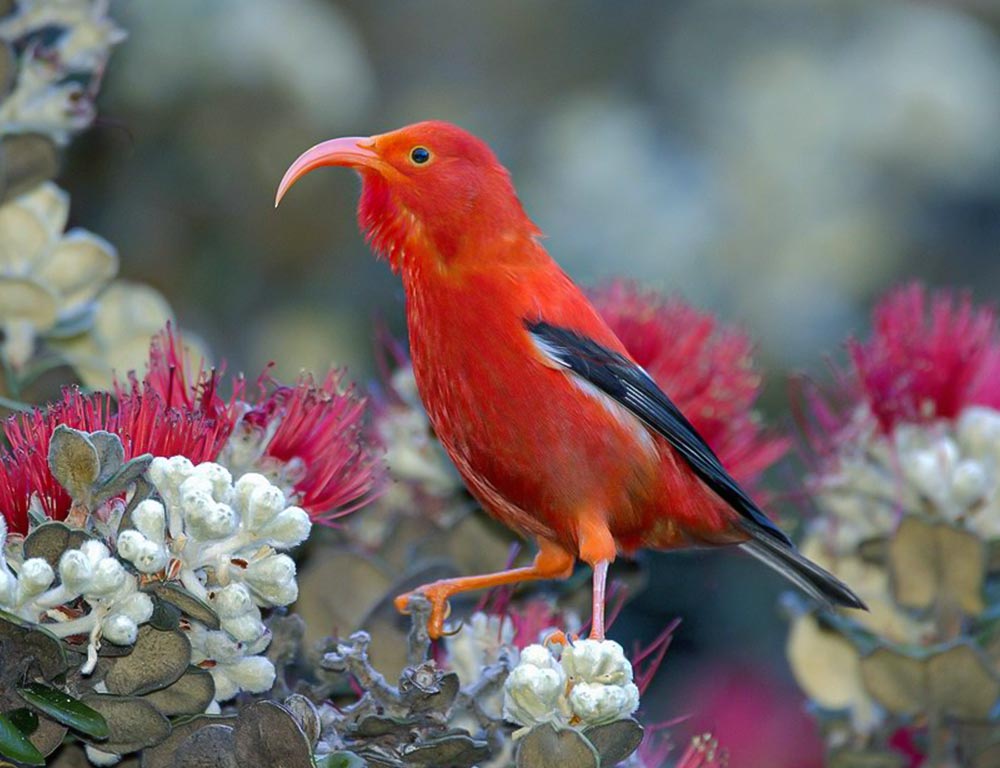
- Scientific Name: Drepanidinae family (various species)
- Category: Passerine birds
- Population: Varied, with some species facing endangerment
- Life Span: Varies, but generally a few years
- Size: Typically small, ranging from 4 to 9 inches
- Weight: Usually lightweight, ranging from 0.5 to 1.5 ounces
- Food: Primarily nectar, supplemented with insects and fruits
- Wingspan: Varies among species, generally between 6 to 12 inches
- Status: Many species are endangered or critically endangered
Hawaiian Honeycreepers are a group of remarkable birds characterized by their vibrant colors and unique beak shapes. These birds have evolved to fill various ecological niches in Hawaii’s diverse ecosystems.
They primarily feed on nectar, using their specialized bills to access flowers and incorporate insects and fruits into their diets.
Unfortunately, many Hawaiian Honeycreeper species face threats like habitat loss, introduced predators, and diseases, leading to declining populations. Conservation efforts are underway to protect these iconic birds and their ecosystems.
2. Nihoa Finch
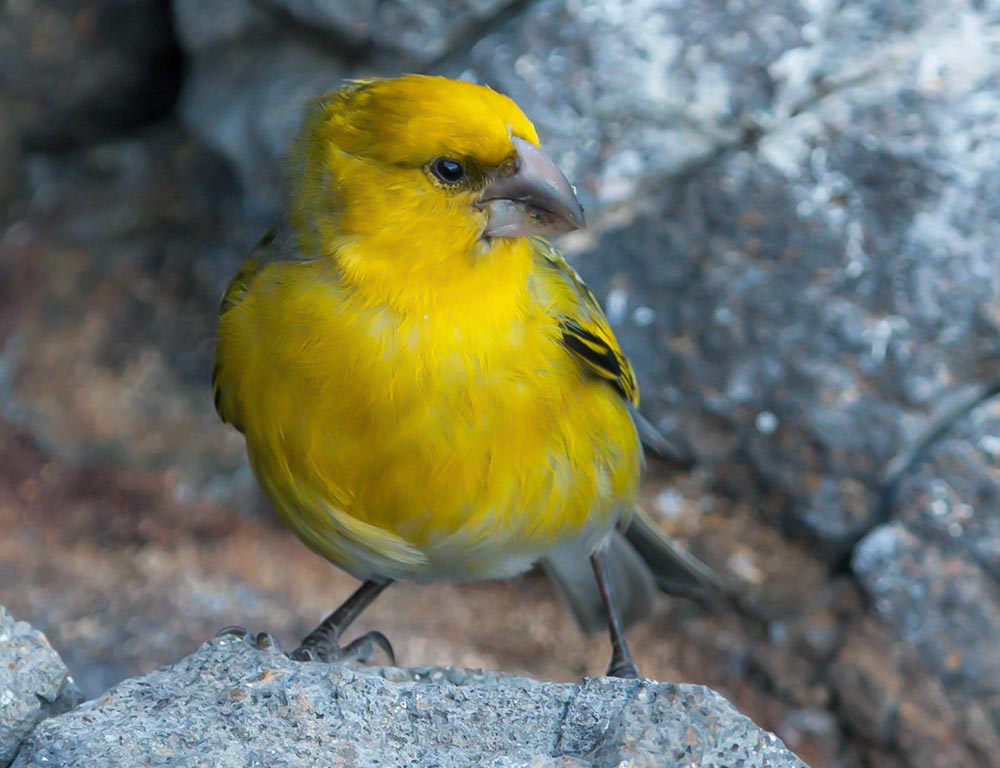
- Scientific Name: Telespiza ultima
- Category: Passerine birds
- Population: Small and vulnerable
- Life Span: Limited, likely a few years
- Size: Approximately 6 inches
- Weight: Around 1 ounce
- Food: Seeds, insects, and plant matter
- Wingspan: Approximately 8 inches
- Status: Vulnerable
The Nihoa Finch, or Nihoa Millerbird, is a species endemic to Nihoa Island. These finches exhibit a relatively short life span and are known for their diet preference for seeds, insects, and plant material.
With a modest size and weight, Nihoa Finches play a crucial role in the island’s ecosystem by contributing to seed dispersal.
Due to the isolated nature of Nihoa Island, the finch population is vulnerable to environmental changes and introduced species. Conservation efforts focus on preserving their unique habitat and mitigating threats from invasive species.
3. Palila
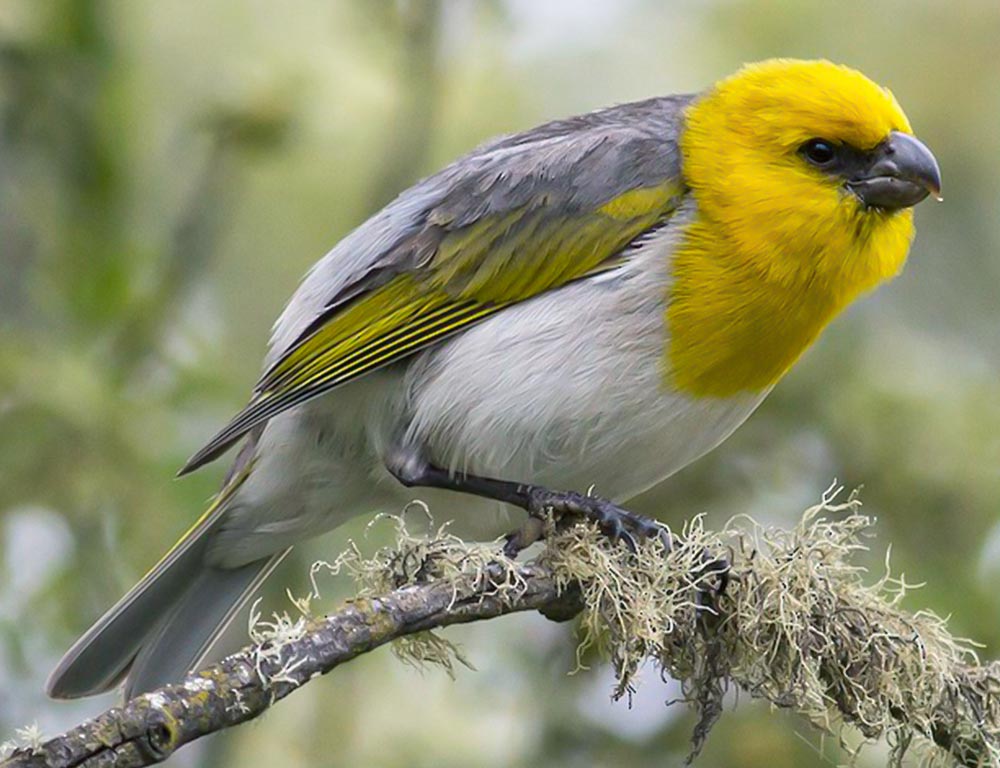
- Scientific Name: Loxioides bailleui
- Category: Hawaiian honeycreeper
- Population: Critically endangered
- Life Span: Limited, likely a few years
- Size: Approximately 7 inches
- Weight: Around 1 ounce
- Food: Primarily feeds on the seeds of the native māmane tree
- Wingspan: Approximately 12 inches
- Status: Critically endangered
The Palila, a species of Hawaiian honeycreeper, is specifically adapted to the unique environment of the subalpine forests on Mauna Kea.
With a diet focused on the seeds of the māmane tree, the Palila has evolved to fill a specialized ecological niche.
Unfortunately, the Palila faces severe threats from habitat loss and invasive species, particularly non-native ungulates that degrade their habitat.
Conservation efforts aim to protect the māmane forests and control invasive species to ensure the survival of this critically endangered bird.
4. Laysan Finch
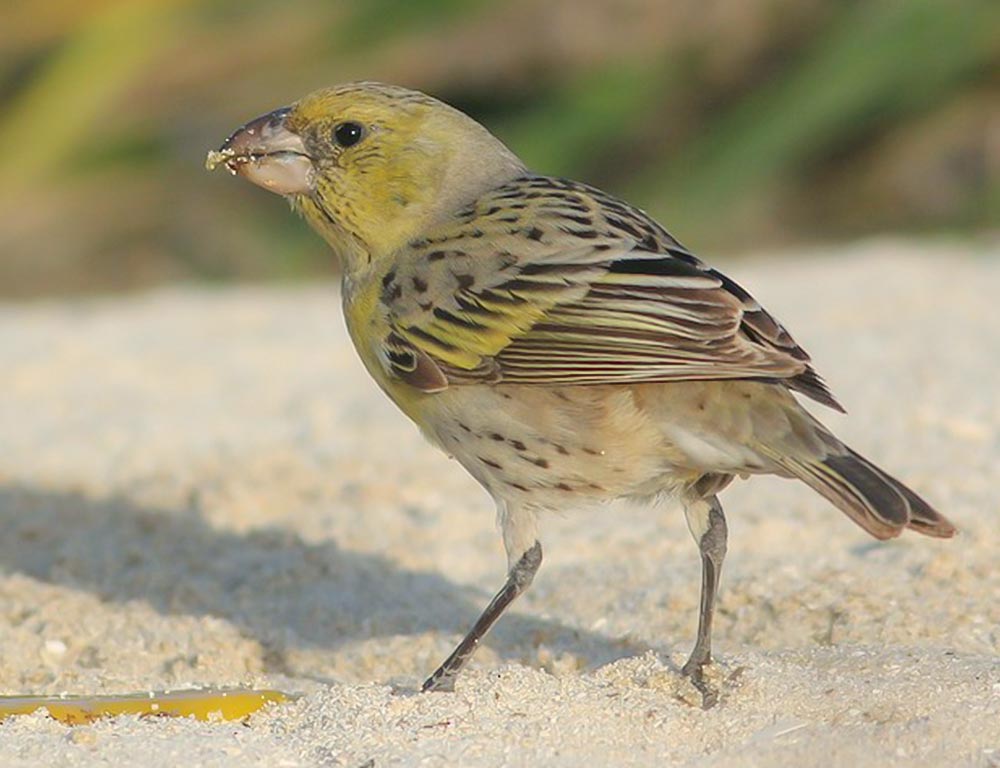
- Scientific Name: Telespiza cantans
- Category: Passerine birds
- Population: Vulnerable
- Life Span: Limited, likely a few years
- Size: Approximately 6 inches
- Weight: Around 1 ounce
- Food: Seeds, insects, and plant material
- Wingspan: Approximately 8 inches
- Status: Vulnerable
The Laysan Finch is a species endemic to Laysan Island. With a modest size and weight, these finches play a vital role in the island’s ecosystem by contributing to seed dispersal.
Their diet consists of seeds, insects, and various plant materials. Due to the isolated nature of Laysan Island, the finch population faces vulnerability to environmental changes and introduced species.
Conservation efforts are directed towards preserving their unique habitat and addressing threats from invasive species.
5. Hemignathus
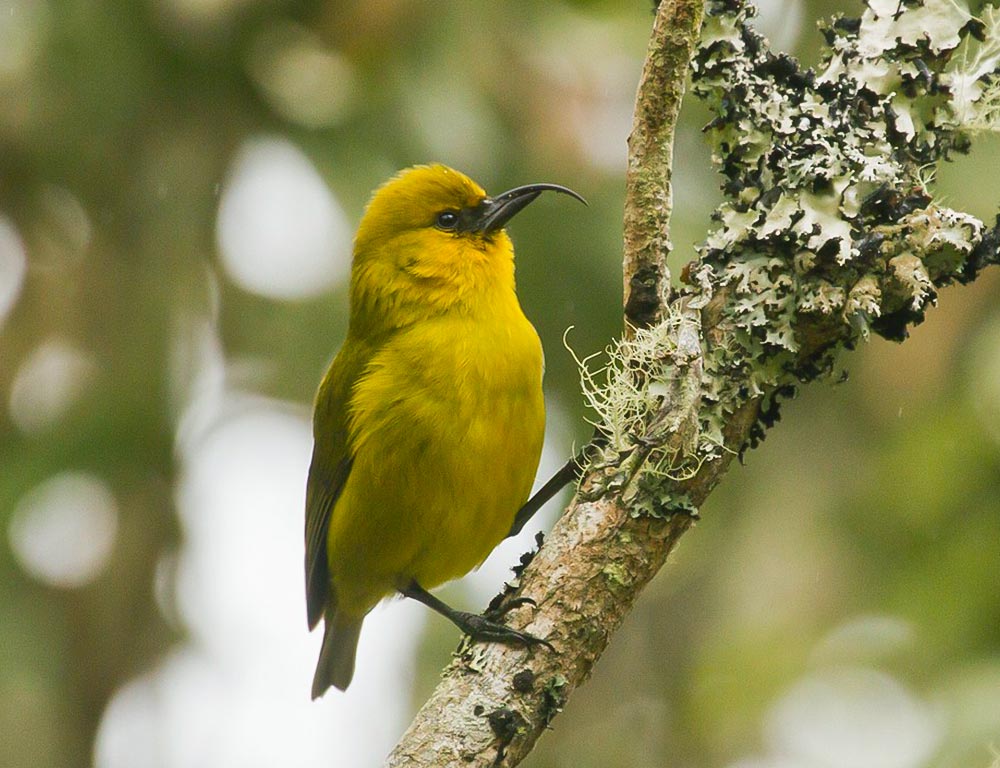
- Scientific Name: Hemignathus spp. (various species)
- Category: Hawaiian honeycreeper
- Population: Varies among species, some facing endangerment
- Life Span: Varies, but generally a few years
- Size: Ranges from 4 to 7 inches
- Weight: Typically lightweight, ranging from 0.5 to 1 ounce
- Food: Primarily nectar, supplemented with insects and fruits
- Wingspan: Varies among species, generally between 6 to 10 inches
- Status: Some species are endangered or critically endangered
Hemignathus, collectively known as the Hawai’i ‘amakihi, comprises various species of Hawaiian honeycreepers.
These birds exhibit diverse beak shapes and sizes, adapting to different food sources within their habitats. Their diet primarily consists of nectar, insects, and fruits.
Like many Hawaiian honeycreepers, some species within the Hemignathus genus face endangerment due to habitat loss and invasive species. Conservation efforts are crucial to safeguard the diverse members of this genus.
6. Maui Creeper
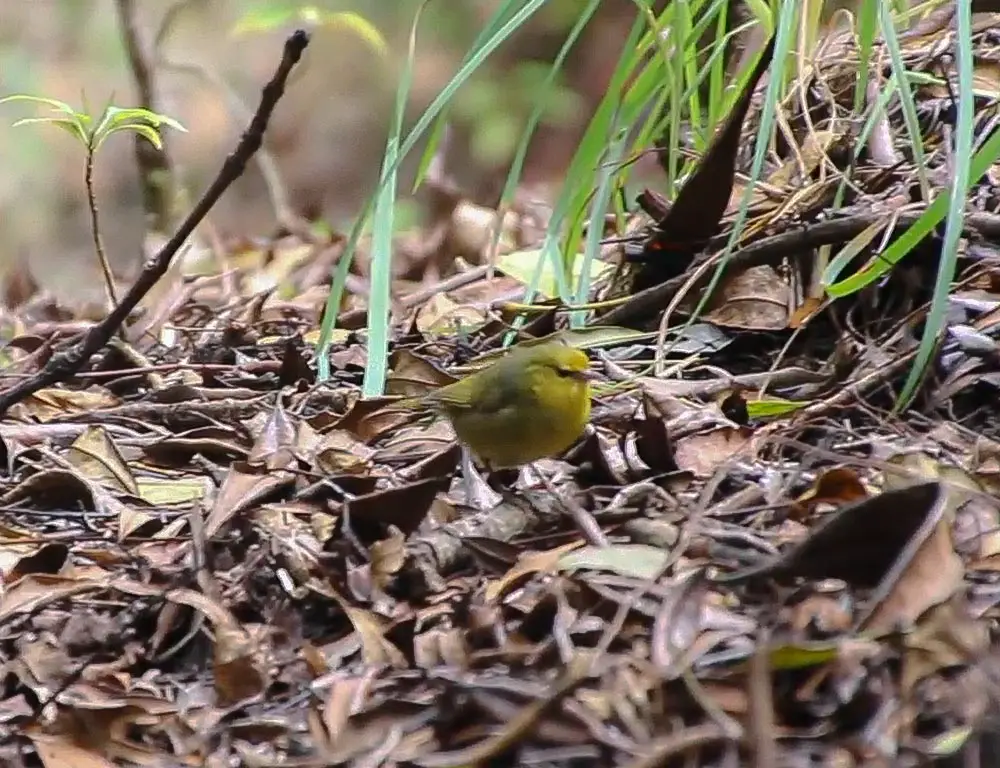
- Scientific Name: Paroreomyza Montana
- Category: Hawaiian honeycreeper
- Population: Vulnerable
- Life Span: Limited, likely a few years
- Size: Approximately 5 inches
- Weight: Around 0.7 ounces
- Food: Primarily feeds on insects and spiders
- Wingspan: Approximately 7 inches
- Status: Vulnerable
The Maui Creeper, or Po’ouli, is a critically endangered species endemic to Maui. This small honeycreeper primarily feeds on insects and spiders.
Unfortunately, habitat loss, disease, and invasive species have significantly declined their population.
Conservation efforts involve habitat restoration and disease management to ensure the survival of this unique and vulnerable Hawaiian honeycreeper.
7. Loxops
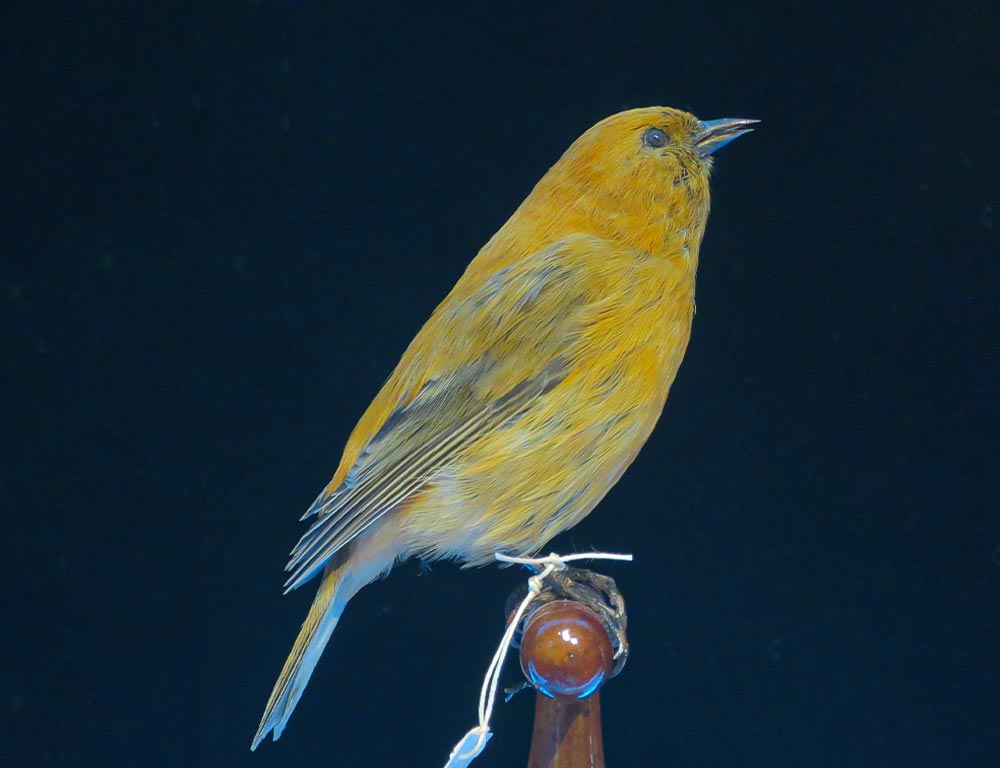
- Scientific Name: Loxops spp. (various species)
- Category: Hawaiian honeycreeper
- Population: Varies among species, some facing endangerment
- Life Span: Varies, but generally a few years
- Size: Ranges from 4 to 6 inches
- Weight: Typically lightweight, ranging from 0.5 to 1 ounce
- Food: Primarily feeds on insects
- Wingspan: Varies among species, generally between 6 to 8 inches
- Status: Some species are endangered or critically endangered
Loxops, commonly known as the Hawaiian creepers, is a genus of Hawaiian honeycreepers with various species. They are characterized by their slender bills and specialized foraging behavior, primarily feeding on insects.
Unfortunately, like many Hawaiian honeycreepers, some species within the Loxops genus face endangerment due to habitat loss, invasive species, and other threats.
Conservation efforts aim to mitigate these threats and protect the unique ecosystems where these birds reside.
8. House Finch
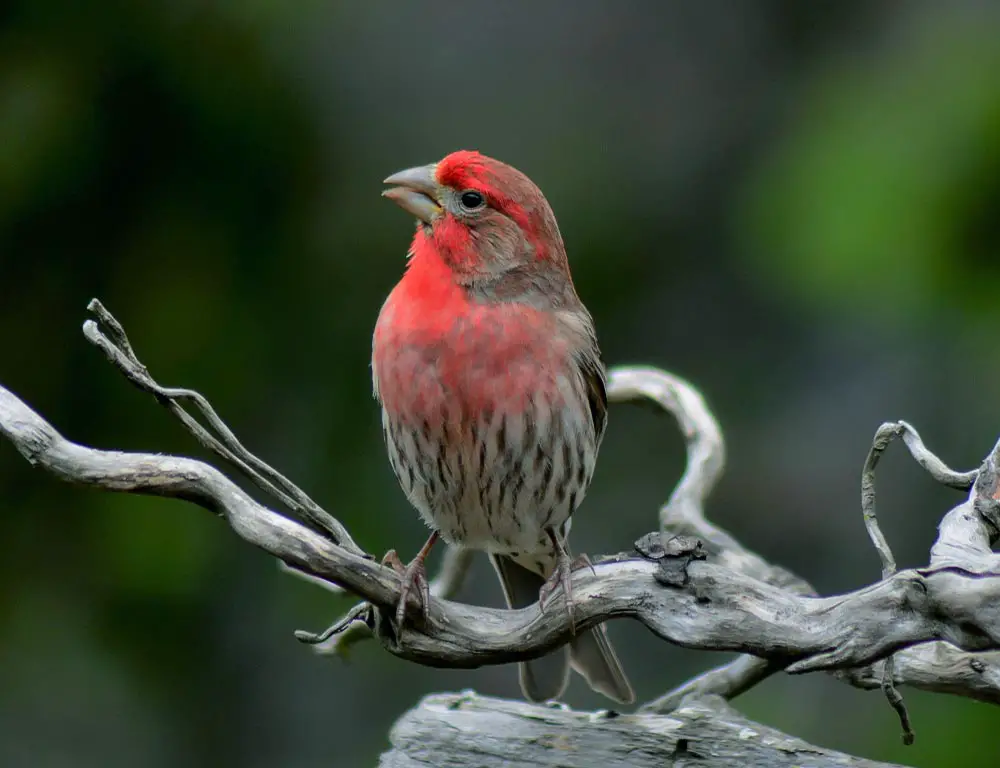
- Scientific Name: Haemorhous mexicanus
- Category: Passerine birds
- Population: Abundant and widespread
- Life Span: Typically 2 to 5 years
- Size: Approximately 5 to 6 inches
- Weight: Around 0.7 to 1.1 ounces
- Food: Omnivorous diet, including seeds, fruits, and insects
- Wingspan: Approximately 9 to 10 inches
- Status: Not threatened
The House Finch is a common and adaptable bird native to western North America. However, it has successfully expanded its range across the United States and parts of Canada.
This finch exhibits a diverse diet, feeding on seeds, fruits, and insects. Its adaptability to urban environments has contributed to its widespread population.
With a relatively short life span, House Finches are known for their distinctive songs and colorful plumage, making them a familiar sight in many residential areas.
9. Telespiza
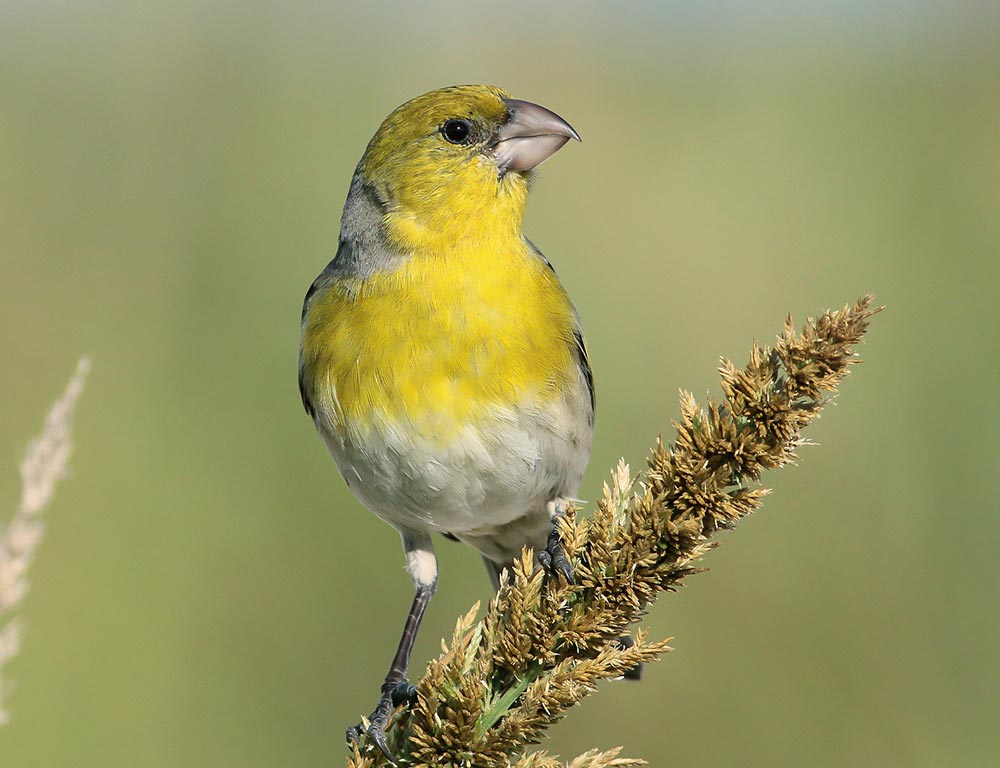
- Scientific Name: Telespiza spp. (various species)
- Category: Passerine birds
- Population: Varies among species, some facing endangerment
- Life Span: Varies, but generally a few years
- Size: Ranges from 5 to 7 inches
- Weight: Typically lightweight, ranging from 0.7 to 1.5 ounces
- Food: Seeds, insects, and plant material
- Wingspan: Varies among species, generally between 7 to 10 inches
- Status: Some species are endangered or critically endangered
Telespiza encompasses various species of Hawaiian honeycreepers; each adapted to different ecological niches.
These finches play essential roles in pollination and seed dispersal within their native habitats. Their diets consist of seeds, insects, and plant materials.
Unfortunately, some Telespiza species face endangerment due to habitat loss, invasive species, and other threats. Conservation efforts are crucial to preserving the unique biodiversity represented by the Telespiza genus.
10. Maui Nui Finch
- Scientific Name: Psittirostra spp. (various species)
- Category: Hawaiian honeycreeper
- Population: Extinct – as per latest data
- Life Span: Limited, likely a few years
- Size: Ranged from 4 to 8 inches, depending on the species
- Weight: Typically lightweight, ranging from 0.5 to 1.5 ounces
- Food: Primarily fed on seeds, fruits, and insects
- Wingspan: Varies among species, generally between 6 to 12 inches
- Status: Extinct
The Maui Nui Finch, also known as the Hawaiian grosbeak or Psittirostra species, was a group of honeycreepers native to the Maui Nui islands.
Unfortunately, these birds are believed to be extinct due to habitat destruction, invasive species, and other human-induced factors.
The loss of the Maui Nui Finch highlights the importance of conservation efforts to protect and preserve Hawaii’s remaining endemic bird species.
11. Kona Grosbeak
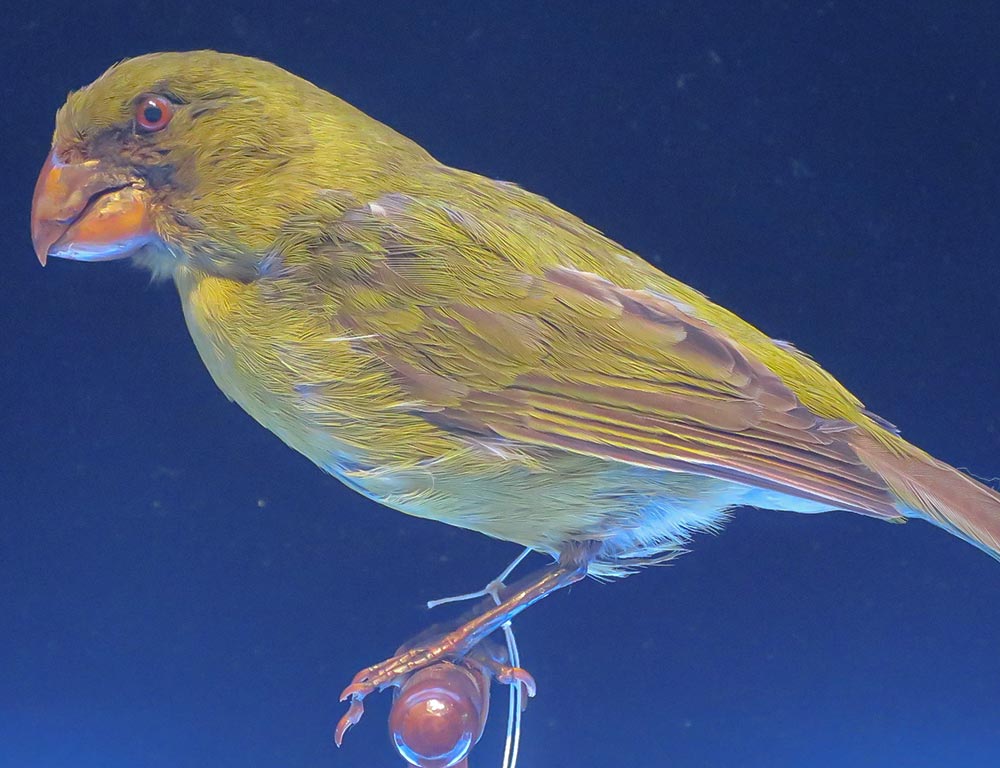
- Scientific Name: Chloridops kona
- Category: Hawaiian honeycreeper
- Population: Extinct, as per latest data
- Life Span: Limited, likely a few years
- Size: Approximately 6 inches
- Weight: Around 1 ounce
- Food: Feeding habits not well-documented, likely seeds and insects
- Wingspan: Information not widely available
- Status: Extinct
The Kona Grosbeak, also known as the Kona Grosbeak Finch, was a Hawaiian honeycreeper endemic to the Kona district on the Big Island of Hawaii.
Unfortunately, this species is believed to be extinct, with habitat loss and introduced species contributing to its decline.
The extinction of the Kona Grosbeak emphasizes the importance of conservation efforts to prevent further loss of endemic bird species in Hawaii.
12. Greater ʻAmakihi
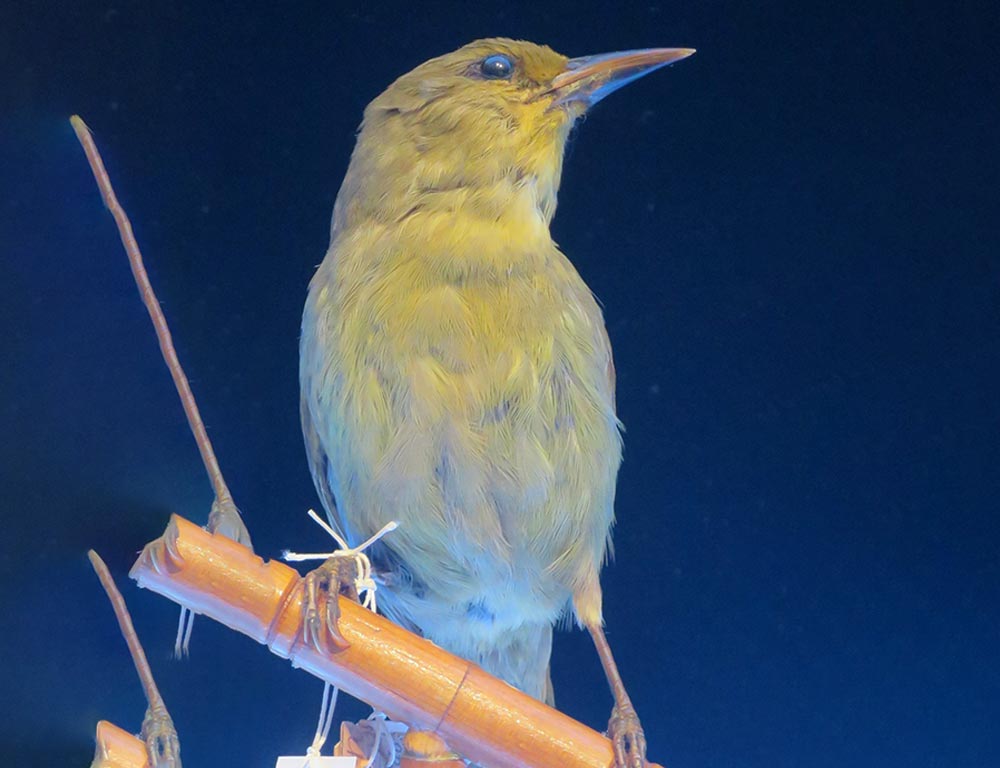
- Scientific Name: Chlorodrepanis spp. (various species)
- Category: Hawaiian honeycreeper
- Population: Varies among species, some facing endangerment
- Life Span: Varies, but generally a few years
- Size: Ranges from 4 to 5 inches
- Weight: Typically lightweight, ranging from 0.5 to 1 ounce
- Food: Primarily nectar, supplemented with insects and fruits
- Wingspan: Varies among species, generally between 6 to 8 inches
- Status: Some species are endangered or critically endangered
The Greater ʻAmakihi is a genus of Hawaiian honeycreepers known for their vibrant colors and unique beak shapes.
They are crucial in pollination and seed dispersal within their native habitats. The diet of Greater ʻAmakihi primarily consists of nectar, supplemented with insects and fruits.
Unfortunately, some species within this genus face endangerment due to habitat loss, introduced species, and other threats. Conservation efforts are essential to preserve the biodiversity represented by the Greater ʻAmakihi.
13. Greater Koa Finch
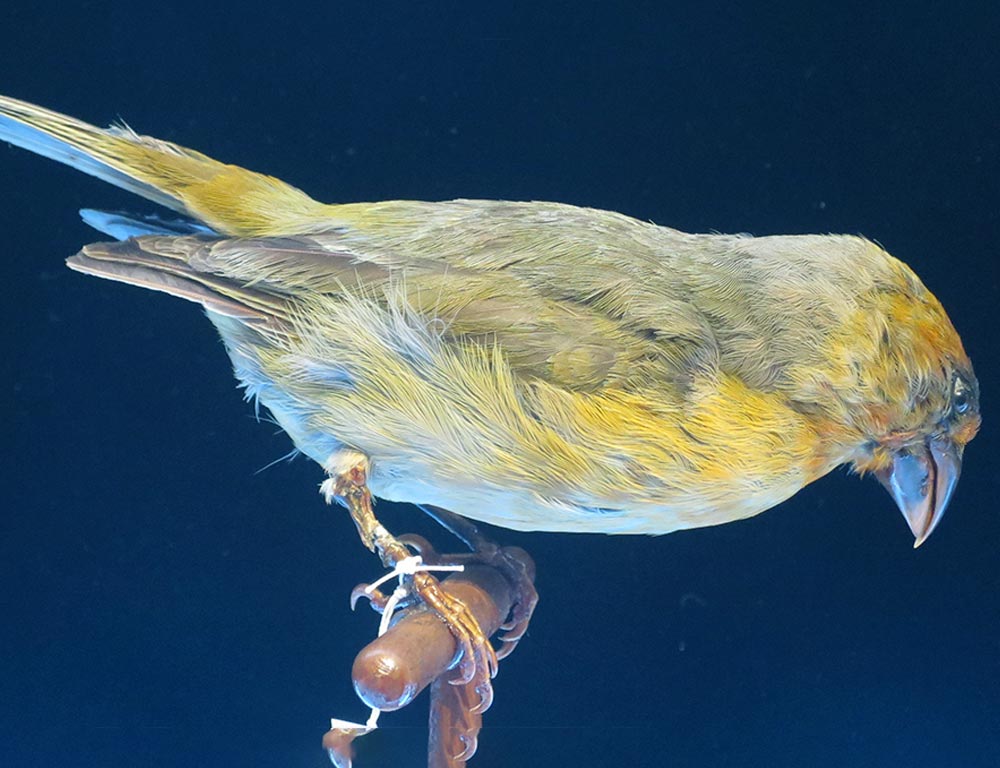
- Scientific Name: Psittirostra palmeri
- Category: Hawaiian honeycreeper
- Population: Extinct, as per latest information
- Life Span: Limited, likely a few years
- Size: Approximately 7 inches
- Weight: Around 1 ounce
- Food: Likely fed on seeds, fruits, and insects
- Wingspan: Information not widely available
- Status: Extinct
The Greater Koa Finch, also known as Palmer’s Koa Finch, was a species of Hawaiian honeycreeper that was once native to the island of Hawaii.
Unfortunately, this bird is believed to be extinct, with habitat loss and invasive species contributing to its decline.
The extinction of the Greater Koa Finch underscores the importance of conservation efforts to protect and preserve the remaining endemic bird species in Hawaii.
14. Maui Akepa
- Scientific Name: Loxops coccineus ochraceus
- Category: Hawaiian honeycreeper
- Population: Endangered
- Life Span: Limited, likely a few years
- Size: Approximately 5 inches
- Weight: Around 0.6 ounces
- Food: Primarily feeds on insects and spiders
- Wingspan: Information not widely available
- Status: Endangered
The Maui Akepa is a critically endangered Hawaiian honeycreeper native to the island of Maui.
This small bird primarily feeds on insects and spiders. Habitat loss, disease, and invasive species have contributed to the decline in its population.
Conservation efforts are underway to protect the remaining individuals and their habitat, focusing on habitat restoration and disease management to ensure the survival of this unique and endangered species.
15. Yellow-fronted Canary
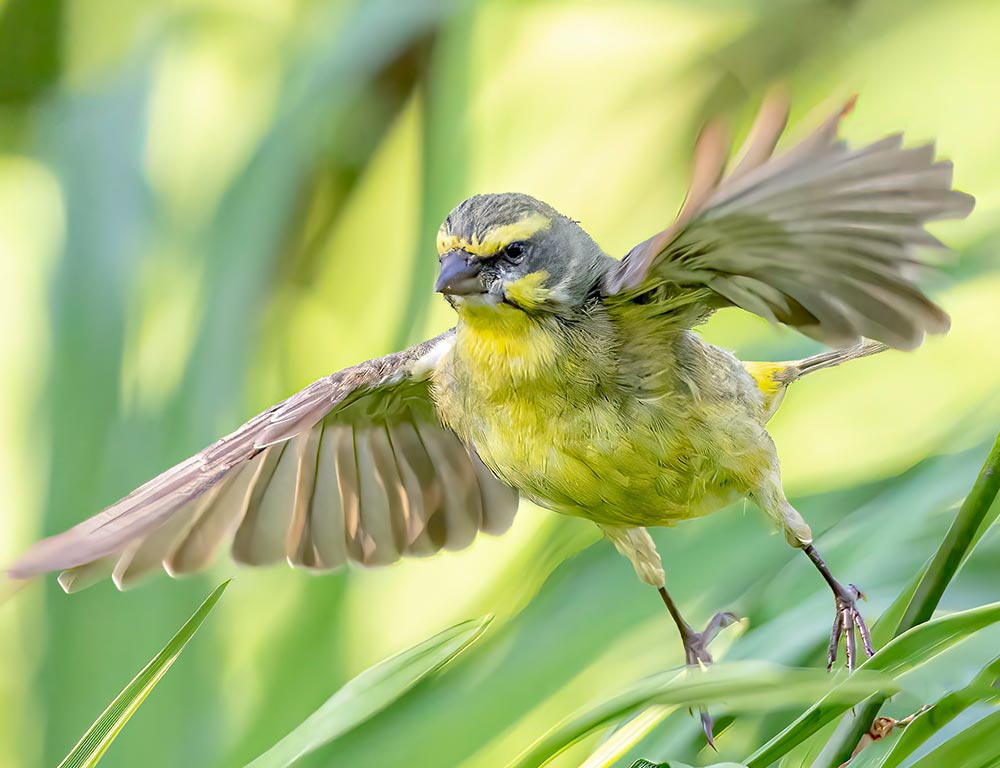
- Scientific Name: Crithagra mozambica
- Category: Songbird, Finch
- Population: Abundant and widespread
- Life Span: Around 5 to 10 years
- Size: Approximately 4 to 5 inches
- Weight: Around 0.5 to 1 ounce
- Food: Primarily seeds, supplemented with fruits and insects
- Wingspan: Approximately 8 to 10 inches
- Status: Not threatened
The Yellow-fronted Canary is a small passerine bird native to sub-Saharan Africa. Introduced to various regions, including Hawaii, it has established populations and is known for its vibrant yellow and black plumage.
This adaptable finch primarily feeds on seeds, with fruits and insects as supplementary items.
As an introduced species, the Yellow-fronted Canary is not considered threatened, and its successful establishment in new environments highlights its ability to adapt to a variety of habitats.
16. Lesser Koa Finch
- Scientific Name: Rhodacanthis flaviceps
- Category: Hawaiian honeycreeper
- Population: Extinct, as per latest information
- Life Span: Limited, likely a few years
- Size: Approximately 6 inches
- Weight: Around 1 ounce
- Food: Likely fed on seeds, fruits, and insects
- Wingspan: Information not widely available
- Status: Extinct
The Lesser Koa Finch, also known as the ʻUla-ʻai-hawane, was a species of Hawaiian honeycreeper endemic to the island of Hawaii.
Unfortunately, this bird is believed to be extinct, with habitat loss and introduced species contributing to its decline.
The extinction of the Lesser Koa Finch underscores the importance of conservation efforts to protect and preserve the remaining endemic bird species in Hawaii.
17. Paroreomyza
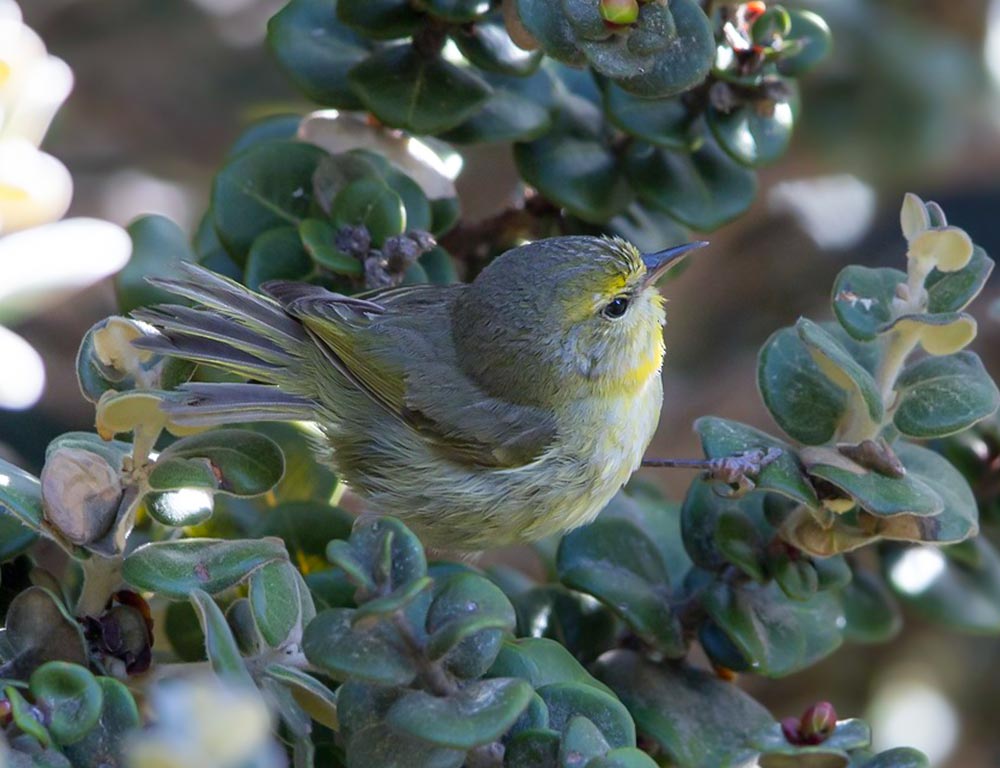
- Scientific Name: Paroreomyza spp. (various species)
- Category: Hawaiian honeycreeper
- Population: Varies among species, some facing endangerment
- Life Span: Varies, but generally a few years
- Size: Ranges from 4 to 6 inches
- Weight: Typically lightweight, ranging from 0.5 to 1 ounce
- Food: Primarily feeds on insects
- Wingspan: Varies among species, generally between 6 to 8 inches
- Status: Some species are endangered or critically endangered
Paroreomyza represents a genus of Hawaiian honeycreepers with various species, each adapted to different ecological niches.
These finches are characterized by their slender bills and specialized foraging behavior, primarily feeding on insects. Unfortunately, some species within the Paroreomyza genus face endangerment due to habitat loss, invasive species, and other threats.
Conservation efforts are essential to mitigate these threats and protect the unique ecosystems where these birds reside.
Wrapping Up
So, the finches of Hawaii embody both the beauty of avian diversity and the vulnerability of island ecosystems.
From the charismatic Hawaiian honeycreepers to the challenges faced by endemic species like the extinct Kona Grosbeak, these birds reflect the delicate interplay between adaptation and conservation.
The tragic loss of some species underscores the urgency of preserving their habitats and mitigating threats.
As we explore the tales of survival and decline among these feathered inhabitants, it becomes clear that our actions shape the fate of these unique avian populations.
The conservation efforts and awareness we raise today are crucial in ensuring a future where the skies above Hawaii remain filled with the melodies of thriving finch communities. Thank you very much.